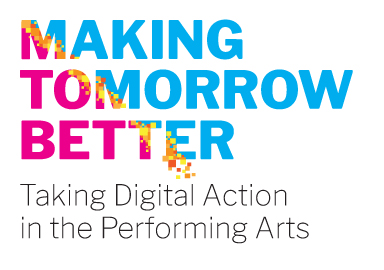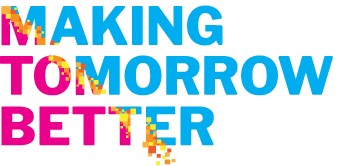Mastering Discoverability for the Performing Arts
Your Guide to Building Your Online Profile Through Structured Data and Linked Open Data Directories
Written by Inga Petri, Strategic Moves
Reviewed by Frédéric Julien, CAPACOA; Tammy Lee and Caitlin Troughton, Culture Creates
Published and current as of July 2021
View or download the complete PDF file here.
Introduction
Web users are increasingly interacting with your website content directly on Google, and other search engines, as well as through Siri, Alexa and other voice-based assistants. The years of merely searching for and visiting your website are in the past. Increasingly, search engine algorithms favour websites that provide machine-readable structured data that they can ‘understand’ and use to provide answers to users’ questions. Search engines also crawl open databases looking for data points that can be repackaged into answers delivered right on the results page, in a multitude of languages.
This graphic shows the four stages of maintaining a contemporary web presence from simply having a web domain and putting up web pages to participating in linked open data directories.
Any arts and culture organization − and especially those in the performing and live arts sectors − can benefit from this profound shift by using structured data on their websites and providing enduring facts to linked open data directories.

This guide centres on the basic requirements of schema.org structured data as well as online directories that aggregate linked open data about people, places, experiences, events and more.
What is the semantic web?
While the early Internet operated as a Web of Documents, the semantic web operates as a Web of Data. Semantic simply refers to the meaning of a word, text or phrase. Semantic web markup is a globally agreed on system of assigning standardized meta-data tags to describe specific pieces of information. The semantic web, by definition, is comprised of machine-readable data that allows search engines to understand the information, relate it to other pieces of information, and provide answers. It enables computers to do more useful work by creating interoperability of data across different applications.
What is structured data?
In 2011 search engine companies founded schema.org. Its purpose is to develop standardized protocols and meta-data tags that would allow them to consistently and reliably understand the content of websites. The schema.org structured meta-data standard enables search engines to more easily and accurately index web pages in order to provide answers to web users’ searches. Search engines display these so-called rich results on their search results page directly, circumventing the need to visit your website. In short, structured data is powering the semantic web of machine-readable data.
Google Events is one of the most important uses of structured data for the performing arts. Web users searching for events can obtain all relevant event information, including one click access to the related ticketing platform without ever visiting the presenting organization’s website. This has profound impact on our understanding of the purpose and use of performing arts websites.
Once data is accurately structured, using supported formats (JSON-LD, Microdata or RDFa), it can also be linked and opened up to other users, beyond search engines.
What is linked open data?
Linking data is the process of interlinking machine-readable, structured data. The more linked data are online about places, people, events, and things, the more powerful the web of data becomes.
When linked data is also open data − that means it can be used and redistributed by others − it becomes linked open data. Ensuring data is not only linked, but also open boosts discoverability online. So called knowledge graphs are an effective way to organize this information in a database. The Google knowledge graph is perhaps the most used knowledge graph as it generates answers and search results to 90% of the world’s searches. Artsdata.ca is a Canadian initiative to build a national knowledge graph for the arts. Doing so should empower the arts sector to use its own data for its own purposes as well.
What is discoverability?
Quite simply discoverability is the capacity of something to be found, stumbled upon or recommended. In our context, it means supplying structured website content and linked open data that machines can read, understand, process and deliver to the public through search engines and similar tools. The purpose of discoverability in the arts is to ensure audiences can find your organization, venues, events, and artist information with ease. In addition to using structured data on your website, ensuring up-to-date information is available in linked open data directories is key.
The evolution of the Internet continues:
- Web 1.0 (1st decade) – Dial up connectivity enables access to the Web of Documents: Static websites connected by hyperlinks. Like printed brochures, websites were designed to be visually engaging while conveying information.
- Web 2.0 (2nd decade) – 3G networks emerge with increased data throughput capacity. The Internet becomes dynamic and interactive through content management systems (CMS) and social media platforms. Web users can access dynamic content, connect and interact with others through social networks, blogs, and web-based services.
- Web 3.0 (3rd decade) – The Semantic Web powers the Web of Data. It creates a way for search engines and other machines to discern the meaning of data/information. Powered by structured data standards, individual points of information are linked to create powerful knowledge. The Google Knowledge Graph is a key innovation that drives forward the evolution of the Internet.





